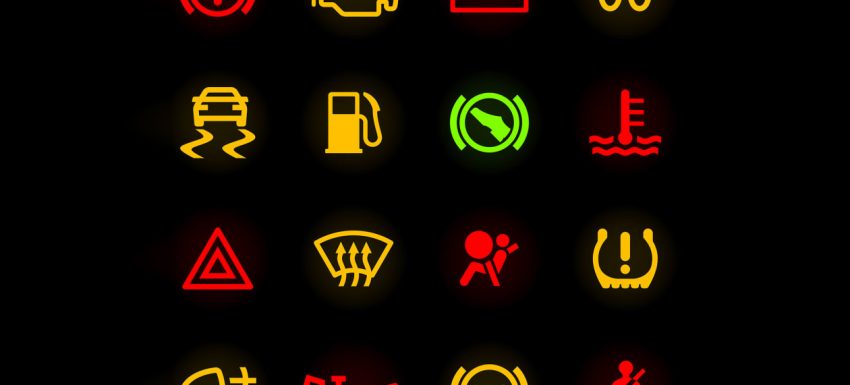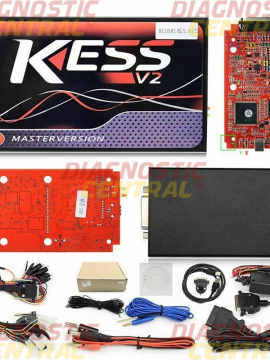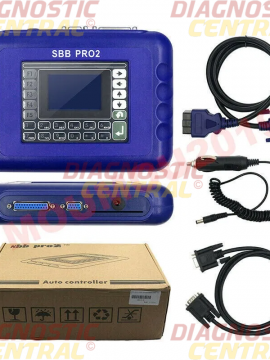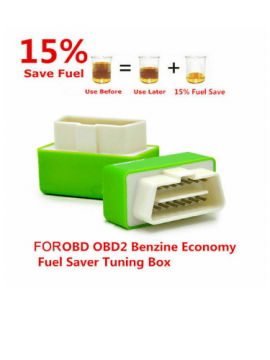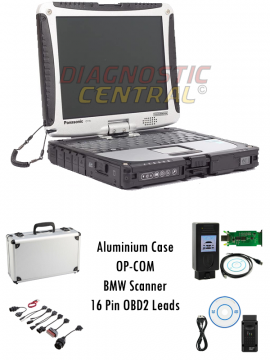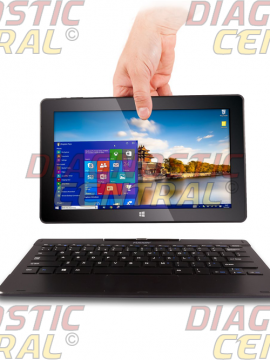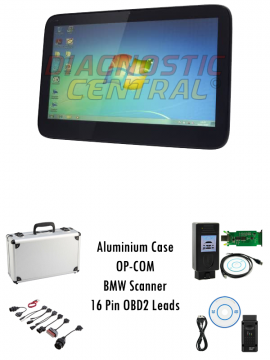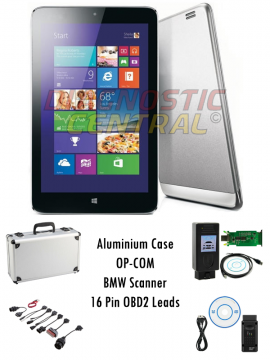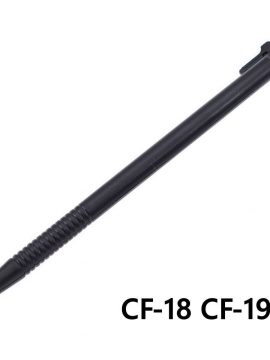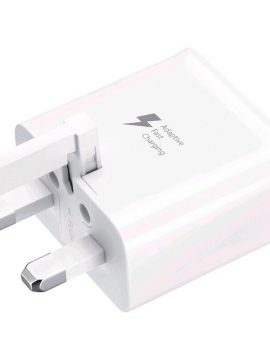Your dashboard lights up with lots of symbols each time you start the car, but what do they mean – and what if one stays on?
After you turn the key in your car’s ignition or press the starter button, dashboard lights in different colours will appear momentarily on the dial cluster display behind your steering wheel. Their purpose is to inform you that the systems they relate to are working correctly. If one or more lights stay on when the engine is running, they’re indicating there’s a problem.
Dashboard warning lights are displayed by colour in red, amber, green and blue on a spectrum of seriousness. While blue and green warning lights are less urgent, we advise you to take the same precautions as you would for the more serious warnings to prevent damage to your car: it’s best to quickly stop where safe to do so and consult your car’s handbook for further advice before continuing with your journey.
- What is ESP on a car?
It’s a good idea to have the problem checked too (unless it’s an obvious problem – a light alerting you to low screen wash, for example, which should go out when you top up the reservoir), especially if it’s an oil warning light or brake system warning light, as they relate to major components of the car.
The majority of warning lights are common to all makes and models of cars, although their precise locations, on or around the dashboard, may vary. Study your car’s handbook to familiarise yourself with what they all mean. Meanwhile, below, we guide you through the most important of them.
Check engine light
If this warning illuminates, it’s very important to get your car checked, even if it feels completely normal to drive. This is because it warns of a potential problem with the engine, which you’ll want to avoid damaging at all costs. While it’s likely to be just a faulty sensor or minor issue, a proper diagnosis is critical to prevent potential damage.
- Engine management light: top 5 causes of amber engine warning light
Oil pressure warning light
Aside from a brake warning light, an oil warning light is one of the most serious warning lights of all. Oil pressure is generated by the oil pump keeping the engine oil circulating and by the quantity of oil in the engine. A leak, a faulty pump or too little (or even too much) oil can cause damage to the engine running to thousands of pounds. So don’t ignore the light. Stop the engine immediately and consult the handbook. You may simply have to top up the oil to make the light go out, but if it remains on, there could be a much more serious issue that requires a garage to investigate.
Brake system warning light
This brake system warning light also requires urgent attention. It may be that you’ve left the handbrake engaged slightly while pulling away, so ensure it’s fully released. If this doesn’t solve the problem, or the warning light appears as you’re driving along, pull over safely and call for roadside assistance or arrange for the car to be taken to a garage. It may be that the brake fluid level is too low and simply needs topping up, or that a brake pad wear sensor is faulty. However, it could also be a more serious issue with the braking system. While you can’t take the risk either way, if the pedal feels spongy when you press it, or sinks all the way to the floor, then it’s easy to tell a significant issue has occurred and the car should not definitely not be driven any further.
Top of Form
Battery charge warning light
This warning light can indicate a number of things, all relating to the car’s battery and charging system. This is a particular problem at night, because a faulty battery can lead to headlights failing, but without the battery or charging system providing electricity, you may find power steering, brake servos or the engine itself stop working.
The cause of the warning light may be as simple as a faulty battery that’ll need replacing. But it could also be due to a problem with the car’s wiring or, more seriously, a fault with its alternator or drive belt. Most garages can check your car’s battery and charging system to identify what’s at fault. Find out how to change your car’s battery.
Temperature warning light
This one is pretty much self-explanatory. If you see the light on at any time after start-up, then the engine is running too hot or there isn’t enough coolant (also called antifreeze) in the system. This may be due to a number of issues, all of which could leave you stranded in a cloud of steam. It could be the car’s radiator is leaky, clogged or broken – you’ll likely see coolant dripping out if this is the case. It could also be due to a faulty water pump. More serious is a blown head gasket, which can signal catastrophic engine failure if you don’t turn off the engine immediately.
In any event, if you notice this light, stop the car immediately, as running hot for too long can lead to total engine failure. If your car is consistently overheating, you need to get it looked at by a garage.
Low-fuel warning light
This is fairly self-explanatory, but we’ll go through it anyway. This is a warning light that comes on when the amount of fuel in the tank has passed a certain level. It’ll usually come on when you’ve got around 50-70 miles of range, and is designed to give enough warning so you can find a fuel station. Running out of petrol won’t cause any mechanical damage, but stopping on the road due to running dry is an offence. If you run out of diesel, it’ll be necessary to bleed the air from the fuel lines and injectors before the engine will start properly. That means it’s more than simply topping up from a jerrycan.
If you’re using more fuel that you’d expect, it could mean you have a fuel leak (check the ground under your car; especially your driveway or parking space), or your car’s on-board computer (ECU) is telling the engine to use more fuel than it needs. A garage will be able to check this for you.
Tyre-pressure sensor warning
Tyre-pressure monitoring systems (TPMS) are an increasingly common sight; indeed for the last few years, it’s been mandatory for carmakers to fit the system. Essentially, it constantly monitors the amount of air in the tyres. If it detects a drop, it’ll provide a warning. This is important, because low tyre pressures can adversely affect braking and cornering and a sudden drop in pressure can cause a dangerous blow-out at high speed. If the TPMS system alerts you to low pressure, you’ll need to check and inflate the tyre. If it has an obvious puncture, you’ll need to change the wheel or use a puncture repair kit.
Traction-control warning light
You’ll most commonly see your car’s traction-control warning light when the wheels lose grip, usually in the rain or snow. It gives a visual indication that you’re close to the limit of grip. If it’s on constantly, it usually means it’s deactivated – either by a fault or by you switching the system off. If it’s the former, you’ll need to get the system checked, if it’s the latter, you should switch the system back on.
Glow plug warning light (diesels only)
Unlike petrol cars, diesel-powered vehicles don’t need a spark to make the air/fuel mixture go ‘bang’ and get the whole engine running. Instead, they use compression and temperature to induce combustion in the mixture. Every diesel has ‘glow plugs’ that are used to turn up the heat and the above symbol indicates that something’s wrong with the plugs themselves or the systems and computers that control them. You may not notice anything wrong at first, but issues with glow plugs can induce early and/or late combustion (known as ‘knocking’) that’ll make your engine sound a bit rough and not run as smoothly or efficiently as it should that could also result in a drop in fuel economy.
Seatbelt warning light
These days, the vast majority of new cars come with a system to let you know if any of your passengers haven’t got their seatbelts fastened. There’ll usually be a light – as above – to tell you if this is the case. Cars use pressure sensors in the seats and sensors in the seatbelts – so if there’s a certain amount of weight on a seat and the seatbelt isn’t secured, it’ll let you know. These warnings may be accompanied by a noise, too.
Door/boot/bonnet warning lights
Like the seatbelt light, these lights don’t usually mean that there’s anything physically wrong with the car (unless the sensor that sends the signal to the light is itself faulty). Instead, they tell you that one of the openings – be it a door, boot or bonnet – is open. This is often obvious if, for example, you’re putting the weekly shop into the boot or securing your children in the back seats. But these lights also tell you if a door, boot or bonnet hasn’t been shut properly and is only loosely closed, so they can be very useful.

